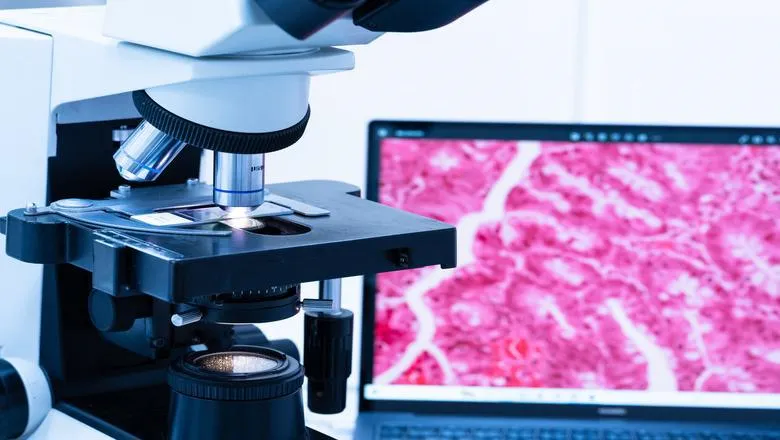Approximately, one in five people aged 45 suffer from osteoarthritis in the UK, and cartilage in the knee has no way of replacing itself. Transplantation with tissue engineered constructs could help solve that... By imaging such tissues without killing the cells, for the first time, researchers will be able to have the confidence that a transplant will work for half the cost.”
Dr Mads Bergholt
09 September 2024
New technology holistically images deep living tissue for the first time
The new device could lay the groundwork for an entirely new kind of osteoarthritis treatment.

A new device that uses light to non-destructively image tissue could revolutionise cartilage and tissue transplant treatment, laying the groundwork for osteoarthritis treatment.
Published today in Nature Communications, research from King’s College London, the University of Southern Denmark and Boston University unveils a new device that can show the molecular structure of deep tissue without using limiting fluorescent labels, the first of its kind. The new readily available machine could help boost the usage of tissue engineering in medicine and half the costs of tissue production in the lab.
Tissue engineering is the practice of restoring or improving the function of cells and tissues in the body by replacing their faulty counterparts with ones grown in the lab. This has potential to be used over a wide range of applications, such as growing cartilage to transplant into a patient’s damaged knee. Cartilage has no way of replacing itself, and damage to it is the main cause of osteoarthritis.
Vital to the body accepting the transplanted cells and tissues is their composition. If the internal composition of the tissue is compromised, it is more likely to be rejected or function poorly. This is particularly the case for the extracellular matrix, the area between cells that governs cell structure and how cells communicate with each other.
To assess this area, traditional imaging methods such as fluorescence microscopy have used fluorescent labels to tag specific molecules in the cell. As well as providing a limited view, only gathering information from tagged molecule groups, these labels can be toxic. This prevents the tissue from being transplanted.
In tissue engineering, this means that two sets of tissue cultures need to be grown in the lab before they can be transplanted into the body, one for examination to check whether the sample is safe, and the other for transplant. As well as being a costly procedure, large variance in lab-grown cell composition quality means that even if scientists image a sample made with the same conditions as the one, they plan to transplant into the body, they cannot be certain that it will not be rejected.
The researchers’ approach, Raman Spectral Projection Tomography, builds on previous technologies that use light to provide a clear and non-invasive view at a much deeper level than before, assessing the extracellular matrix.
This system opens several possibilities for tissue imaging not only in tissue engineering, but also in cancer applications and autoimmune diseases. For the first time Raman is not only a primarily surface sensitive technology, now we can see through larger tissues with actual spatial information on where specific signals originate."
Dr Martin Hedegaard, Associate Professor of Biophotonics at the University of Southern Denmark
Dr Mads Bergholt, Reader in Biophotonics at King’s College London, said “Tissue engineering has the potential to be life changing for many patients. Approximately, one in five people aged 45 suffer from osteoarthritis in the UK, and cartilage in the knee has no way of replacing itself. Transplantation with tissue engineered constructs could help solve that.”
However, the composition of most cartilage grown in the lab has varying levels of vital components in the extracellular matrix, like collagen. Without being able to see this variation, scientists can never be certain that the tissues they are transplanting into the body will be safe and functional, and steps taken to improve individual samples will be slow and iterative. By imaging such tissues without killing the cells, for the first time, researchers will be able to have the confidence that a transplant will work for half the cost.”
In the future, the team hope to use the technology in operating theatres to image tumours in patients undergoing operations to remove them, reducing the need for time consuming study of tumour tissues while potentially saving time and lives.
Dr Martin Hedegaard PhD., Associate Professor of Biophotonics at the University of Southern Denmark, said “This system opens several possibilities for tissue imaging not only in tissue engineering, but also in cancer applications and autoimmune diseases. For the first time Raman is not only a primarily surface sensitive technology, now we can see through larger tissues with actual spatial information on where specific signals originate. This would be valuable in understanding the spread of cancers and the progression autoimmune diseases such as Rheumatoid Arthritis.
“We are also currently working on spinning out the technology based on the current IP with funding from Spinouts Denmark.”

